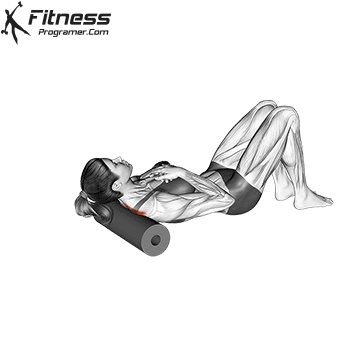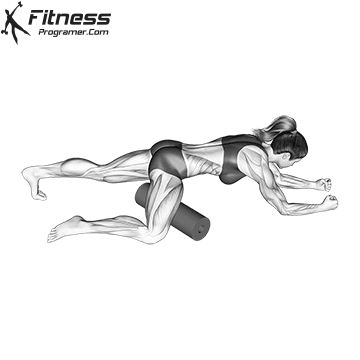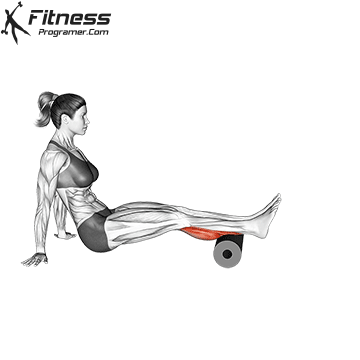We’ve all seen them – those cylindrical foam objects at the gym that people seem to be rolling around on. But what’s the deal with foam rollers and why are they such a staple in fitness training and recovery routines? Well, we’re about to dive into the real benefits of foam rolling.
Foam rolling, also known as self-myofascial release, is more than just a current fitness trend. It’s a technique that’s been used by therapists and athletes for years to improve performance, speed up recovery, and increase flexibility. But it’s not just for the pros—everyday gym-goers can reap the benefits too.
To better understand the impact and utility of this simple tool in enhancing fitness routines, we chatted with Ryan Helriegel, founder of Rolflex Recovery. Let’s explore how foam rolling can make a big difference in your fitness journey.
Understanding Foam Rolling and Its Popularity
We’ll delve deeper into the mechanism and rising recognition of foam rolling within the fitness community.
What Is Foam Rolling?
Foam rolling serves as a form of self-myofascial release, a technique that employs pressure and stretching to achieve better muscle function and mobility. It’s achieved with the aid of a cylindrical foam device, aptly named a foam roller.
You simply apply pressure, using your body weight, onto the foam roller and slowly roll over different muscle groups. This action promotes blood flow, helps to loosen tight muscles, reduces muscle soreness, and enhances overall muscle function. As part of recovery routines, foam rolling focuses on alleviating tension spots known as trigger points in the muscles.
Why Has Foam Rolling Become Popular in Fitness Circles?
Foam rolling’s popularity stems from its numerous benefits and its simplicity. Ideal for athletes and fitness enthusiasts, foam rolling offers a convenient way to warm up muscles before a workout and to soothe muscles after one. Unlike other detailed and often expensive recovery and performance-enhancing methods, foam rolling isn’t heavy on the pocket. You don’t require any pricey equipment, neither does it necessitate extensive time commitments.
With its ability to aid recovery, enhance flexibility, and reduce muscle pain, foam rolling has earned a spot in numerous fitness regimens. In addition, foam rolling is flexible in terms of when and where it can be practiced. These factors contribute to foam rolling’s widespread acceptance, making it an integral component of fitness training and recovery routines.
The Science Behind Foam Rolling
Diving into the intricacies of foam rolling reveals the scientific mechanisms at play. Below, we dig deep into how foam rolling works on muscles and explore research that supports its myriad benefits.
How Foam Rolling Works on Muscles
Let’s start by unraveling the process that occurs when a foam roller touches the muscles. This technique, known essentially as self-myofascial release, appears deceptively simple — foam roller meets the muscle, pressure ensues, and presto, the benefits roll in. However, there’s actually a complex interplay of physiological aspects that make it all happen.
Foam rolling applies mechanical pressure to muscles, which produces a response from the nervous system. In fact, it’s this interaction that triggers the decrease in muscle tension. Driven by this activity, the muscles loosen up, paving the way for increased blood circulation and nutrient distribution. Furthermore, applying pressure on the muscles can also stimulate the lymphatic system, aiding in the removal of waste products that accumulate during intense workouts.
However, remember that foam rolling is a tool — it’s the correct and consistent application that extracts its full potential. So, when foam rolling for fitness training and recovery, it’s best to seek professional guidance, ensuring it’s done right and serves its primary purpose.
Studies Supporting Foam Rolling Benefits
Research steadily backs up the anecdotal praises for foam rolling. For example, a study published in the Journal of Athletic Training in 2015 reported that foam rolling could significantly increase range of motion without the consequent decrease in muscle strength, commonly observed with static stretching. In this study, 40 males performed foam rolling or planking exercises before undergoing tests for hamstring flexibility and strength.
In another instance, the Journal of Sports Rehabilitation in 2020 published a study that found foam rolling was effective in decreasing muscle soreness after exercise-induced muscle damage. Out of 17 women who underwent moderate to intense workout sessions, those who implemented foam rolling demonstrated lesser muscle soreness and better muscle recovery compared to those who did not.
Undoubtedly, the benefits and the science behind foam rolling continue to captivate researchers, with new studies continuously enriching our understanding and solidifying foam rolling as an invaluable component in fitness training and recovery routines.
Key Benefits of Foam Rolling for Fitness Training
Improved Flexibility and Increased Range of Motion
Foam rolling, due to its pressure applications on muscles, fundamentally loosens tight muscle fibers. In doing so, it enhances flexibility and range of motion.
A study published in the Journal of Sports Rehabilitation corroborated this as its subjects experienced a 10% improvement in hamstring flexibility after foam rolling.
Additionally, The Journal of Strength and Conditioning featured a study that displayed a significantly better range of motion after foam rolling, without corresponding decreases in muscle strength. That’s a substantial advantage for those involved in vigorous fitness training, making this method an effective measure to boost both flexibility and motion range.
Enhanced Muscle Preparedness and Performance
Apart from improving flexibility, foam rolling bolsters muscle preparedness and heightens performance levels. It’s been employed as part of warm-up routines to get muscles ready for intense exercises. It improves blood flow, driving more oxygen and nutrients to the muscles. This process accelerates muscle recovery and reduces the chances of injury, contributing to overall fitness performance.
On top of that, a study featured in the Journal of Athletic Training cites a considerable reduction in muscle soreness post vigorous exercises, thanks to foam rolling—an attribute influencing the performance curve positively.
Benefits of Foam Rolling for Recovery
Recovery is an essential aspect of fitness, and foam rolling proves valuable in the process. The ensuing segments provide detailed insights into the role of foam rolling in reducing muscle soreness and accelerating recovery post-workout.
Reduction in Muscle Soreness Post-Workout
Foam rolling benefits extend beyond standard workouts, easing muscle fatigue and soreness after intense sessions. Muscle activation and recovery is critical to maintain training intensity.
By breaking down knots in the muscle fibers and fascia (the connective tissue surrounding muscles), foam rollers provide relief, reducing post-workout discomfort. A study published in the Journal of Athletic Training attested to this, finding athletes who foam rolled experienced markedly lower muscle soreness levels post-exercise compared to their non-foam rolling counterparts.
Accelerated Recovery Process
Speedy recovery is paramount in the fitness world and foam rolling is a game-changer in this regard. By stimulating blood flow and loosening tight muscles, foam rolling aids in quicker recovery after hard training sessions.
In reference to a 2015 study published in the Journal of Strength and Conditioning Research, foam rolling significantly minimizes delayed onset muscle soreness (DOMS) which improves recovery and performance. Furthermore, it facilitates lymphatic drainage which helps clear toxins out the body. This accelerates repair processes, explaining why foam rolling is such a prevalent tool in most athletes’ recovery arsenal.
Practical Tips for Effective Foam Rolling
As you’ve now grasped the benefits of foam rolling amidst your fitness journey, it’s time to dive deeper into how you can obtain the maximum gain from this self-myofascial release technique. We will provide you with insights into choosing the right foam roller and understanding the best practices for foam rolling techniques.
Choosing the Right Foam Roller
Without delving into irrelevant jargon, the primary considerations for choosing a foam roller boil down to its size, shape, and density. Small foam rollers, for instance, generally 12 to 18 inches long, cater better to targeting specific muscle groups, such as the calf or shoulder muscles. In contrast, larger rollers, usually 36 inches long, are more suited for rolling large muscle groups, like your back.
Speaking of shape, foam rollers come in different forms, including smooth, ridged, and spiked, and each variant prompts a distinct myofascial response. The density, dictating the firmness of the roller, steers the intensity of the application. A rule of thumb — harder rollers provide a more intense workout whereas softer rollers cater to gentler, more comfortable rolling experiences.
Best Practices for Foam Rolling Techniques
Accurate application maximizes the effectiveness of foam rolling. Firstly, always try to roll on a flat and stable surface to maintain balance and control. Secondly, remember to roll slowly over the muscle group, giving your CNS ample time to adapt and relax. It’s also beneficial to spend a few extra seconds on tender spots—these are your muscles’ way of indicating areas of heightened tension.



Keeping pressure consistent is another aspect to look after. Neither exerting too little nor too much pressure would bring about the desired results. It’s not about enduring pain, but about finding a balance where you can feel the tissues yielding without experiencing severe discomfort. Moreover, be certain to roll before and after a workout, both serving their unique purposes. Pre-workout rolling triggers muscle activation while post-workout rolling helps speed up recovery by reducing muscle soreness.
Note, however, to avoid rolling over bony structures and focusing more on muscle groups. Also, try to avoid rolling your lower back due to its inherent instability, there are other techniques better suited for lower back discomfort.
By incorporating the above insights into your fitness regime, you will be effectively embracing foam rolling, propelling yourself towards improved workout performance and quicker recovery periods.
We’ve journeyed through the world of foam rolling and its undeniable impact on fitness training and recovery. Foam rolling is more than a trend—it’s an affordable and effective tool for enhancing muscle function, boosting blood flow, and reducing soreness. It’s a straightforward technique that’s backed by science and embraced by athletes. But remember, it’s not just about rolling. It’s about rolling right. The right foam roller, the right technique, and the right time can make all the difference in your workout results and recovery.
So, let’s roll with purpose, let’s roll with knowledge, and most importantly, let’s roll towards better fitness and recovery. Foam rolling isn’t just an addition to your routine—it’s an upgrade.
Explore Fitness Resources
- are apple fitness workouts good
- are planet fitness workouts good
- can you edit apple fitness workouts
- can you download apple fitness workouts
- can you schedule apple fitness workouts
- how to fitness workouts
- how to download apple fitness workouts
- what is functional fitness workouts
- what is cross fitness workouts
- fitness workouts for beginners
- fitness workouts for women
- fitness workouts for kids
- fitness workouts for men
- fitness workouts for soccer players
- fitness workouts for seniors
- fitness workouts near me
- home fitness workouts without weights
- fitness workouts at home without equipment
- workouts like fitness marshall
- fitness or workouts
- fitness workouts at home
- fitness workouts apple watch
- fitness workouts com
from Ethereum – My Blog https://ift.tt/jgf0O3K
via IFTTT